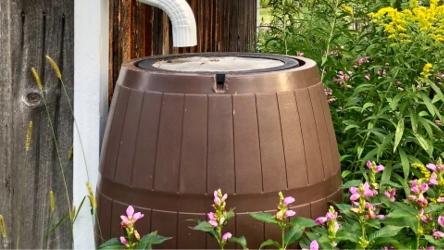Lawns typically need four times more water than climate appropriate shrubs and perennials, which makes converting lawns to sustainable landscapes one of the best ways to use water more efficiently. Marin Water customers who replace their lawn with a more water-efficient alternative could be eligible for a rebate to offset conversion costs. And once converted, the new landscaping will use less water. That can translate to smaller bi-monthly water bills!

Lawn replacement rebates available for Marin Water customers
New higher rebates now available!
For a limited time, customers may receive a rebate of up to $4.68 per square foot for replacing grass in their landscapes. Homeowner reimbursements will be capped at 1,000 square feet, and business owners capped at 5,000 square feet. The ongoing base rebate of $2.18 per square foot has fewer requirements to provide customers with more flexibility while still achieving water savings. A best practices, $3.68 per square foot is available to customers who follow best management practices to optimize long-term water savings, including:
- Sheet mulching in place versus physical removal of lawn
- Installation of mostly California native low water use plants over at least 50% of the project area based on mature plant size
- Installation of an alternative water source or stormwater capture feature such as a rain garden, rainwater harvesting cistern, or graywater system
- Customers who install a rain garden fed by a disconnected downspout may be eligible for an additional $1 per square foot while funds are available.
Turf replacement rebates exempt from State income tax requirements!
As another small benefit of the rebate program, Assembly Bill 2142, which was signed by Gov. Gavin Newsom in September 2022, ensures that turf replacement rebates issued in 2022 and beyond will be exempt from state income tax requirements. (Federal tax rules do still apply). An IRS W-9 Form will be needed for tax filing.
Pre-approval is required to participate in the Cash for Grass program; the first step is to submit a rebate application.
NOTE: REPLACING LAWN WITH ARTIFICIAL TURF DOES NOT QUALIFY FOR THIS PROGRAM
Apply for rebate
Get inspired by another customer's lawn transformation!
Sometimes the best inspiration comes from our neighbors. Read about a Marin Water customer who took advantage of the District's Cash for Grass program to transform her backyard into an oasis of for native plants and pollinators. Read story
Frequently asked questions
 Translate
Translate
